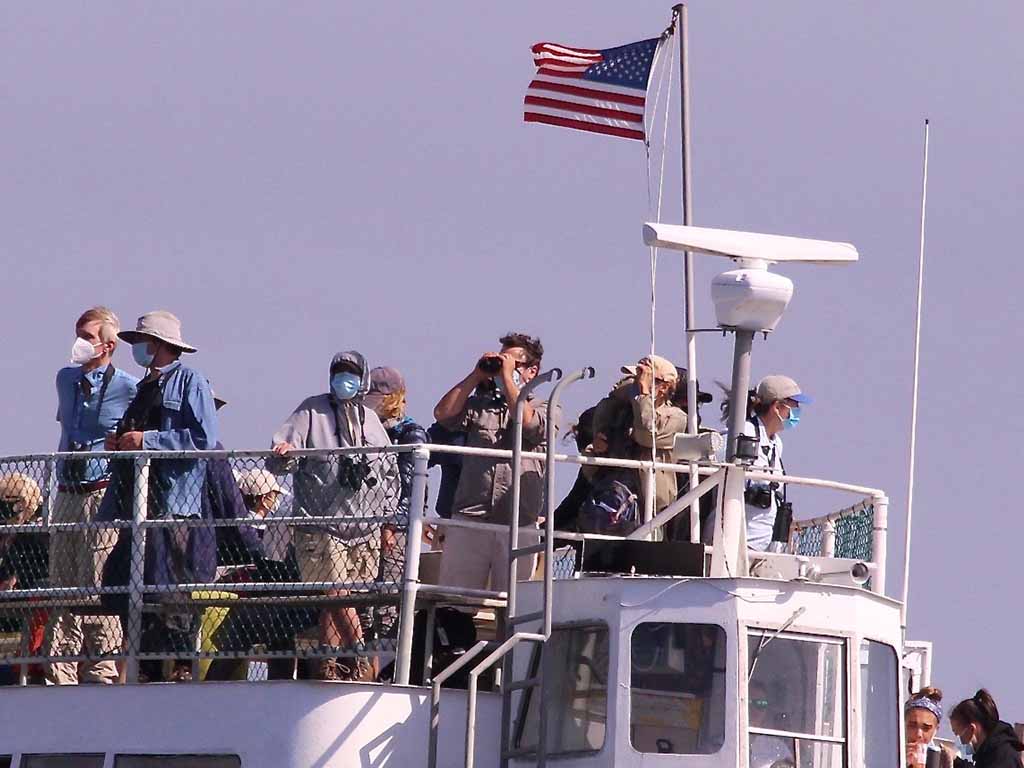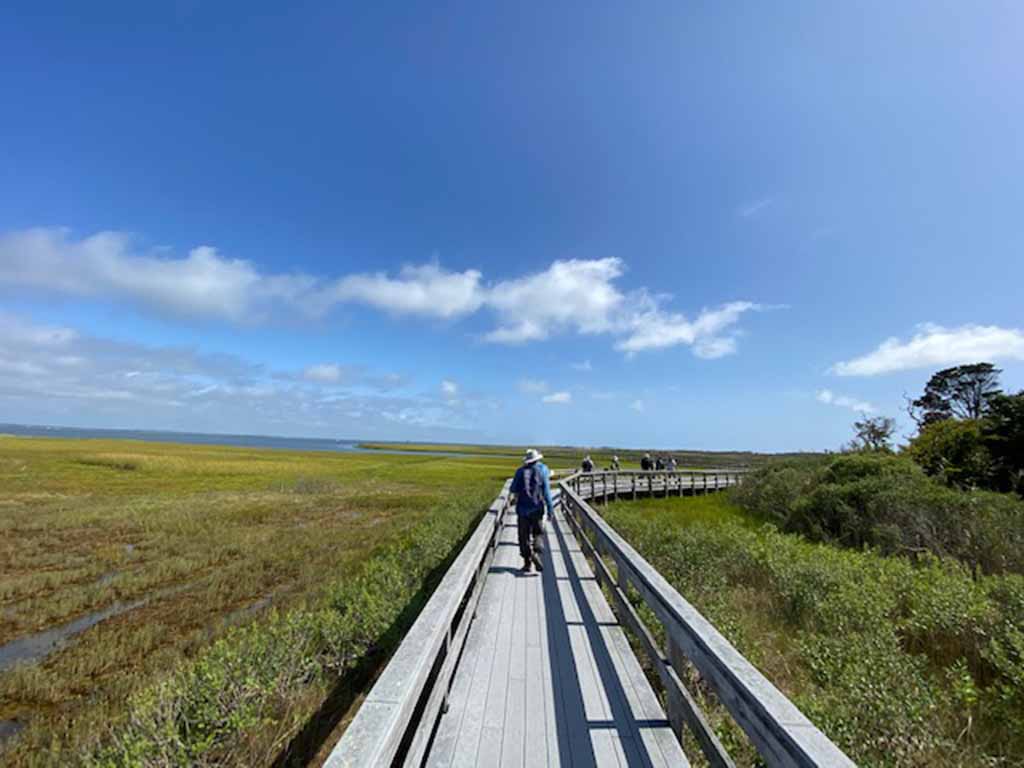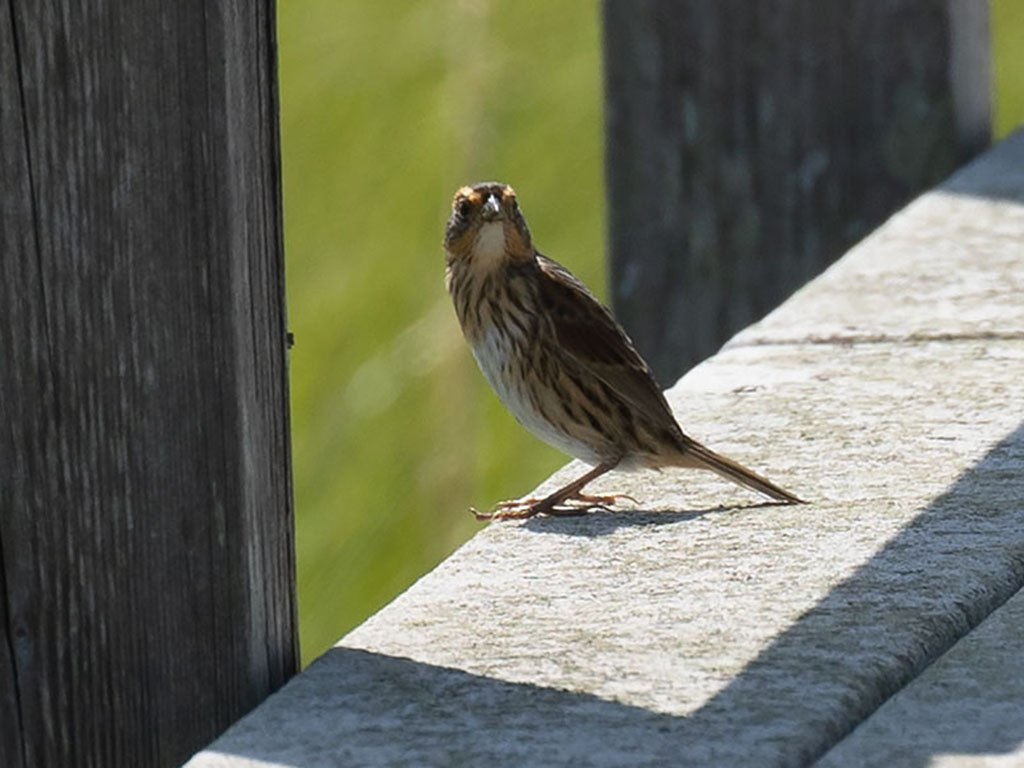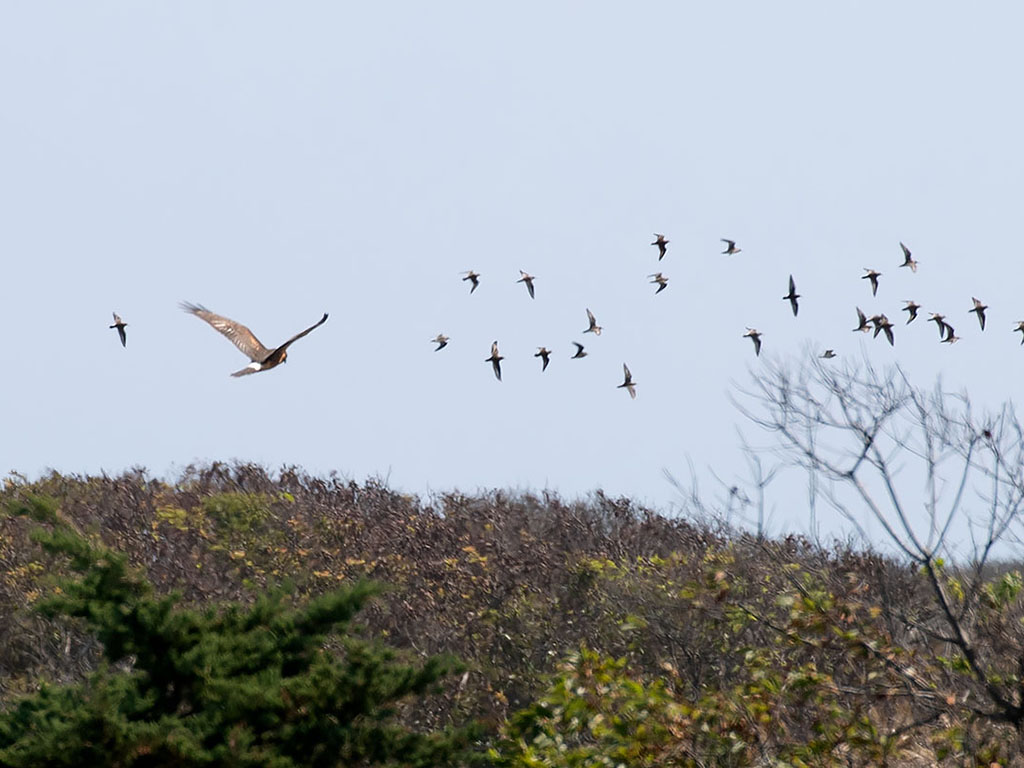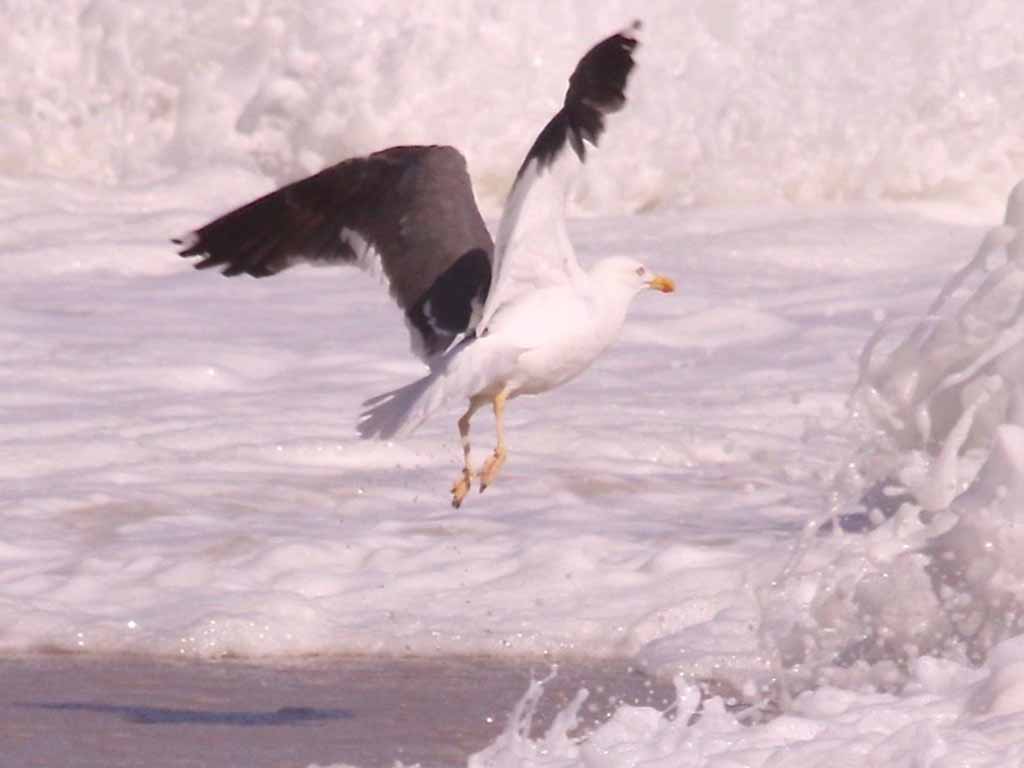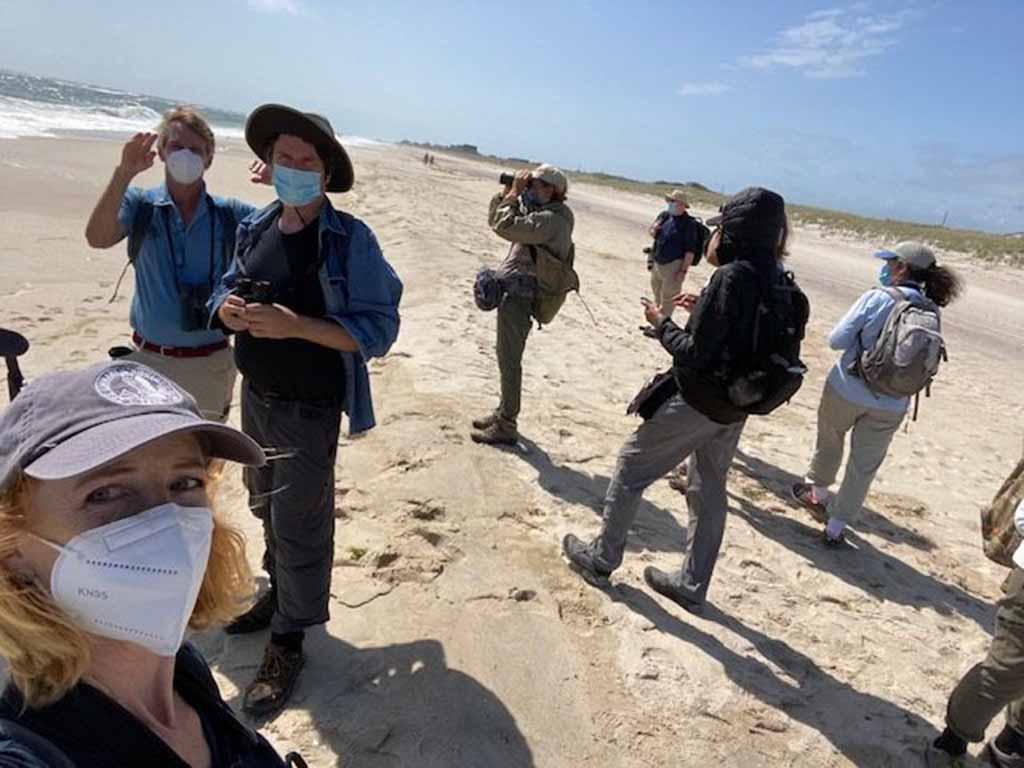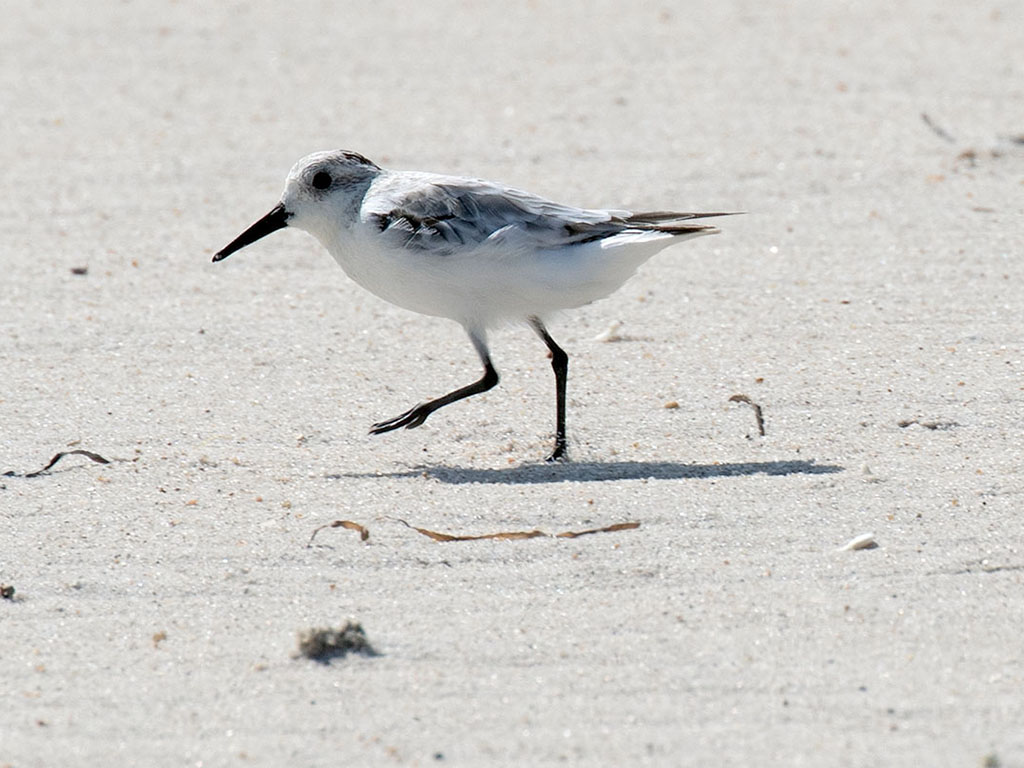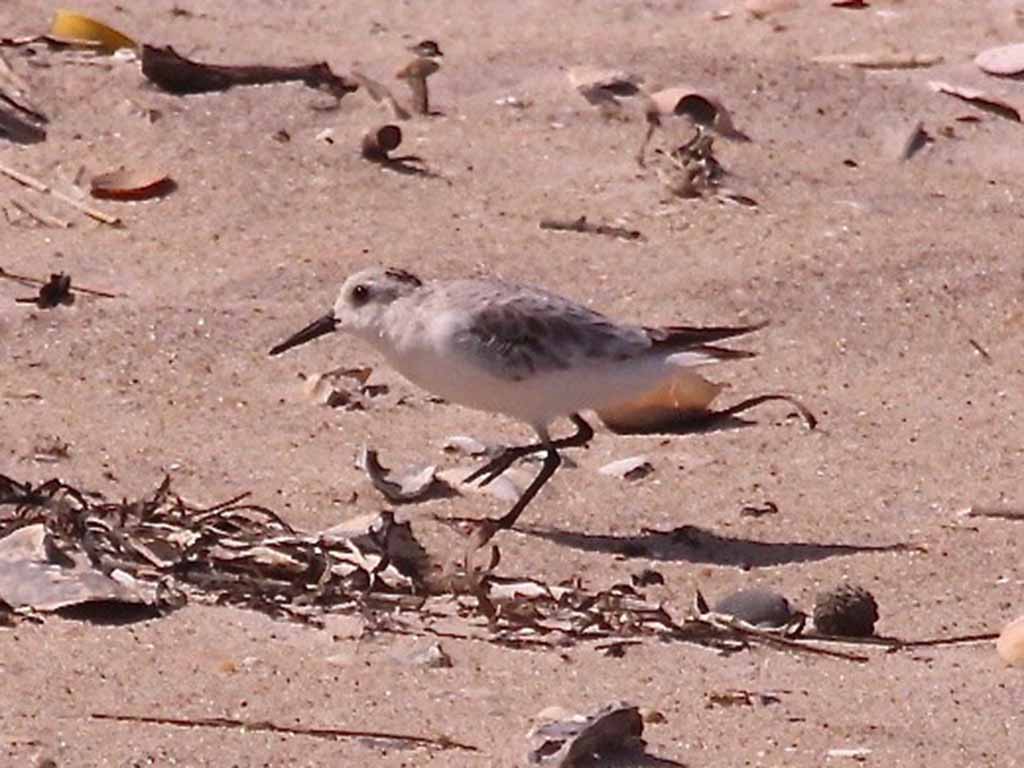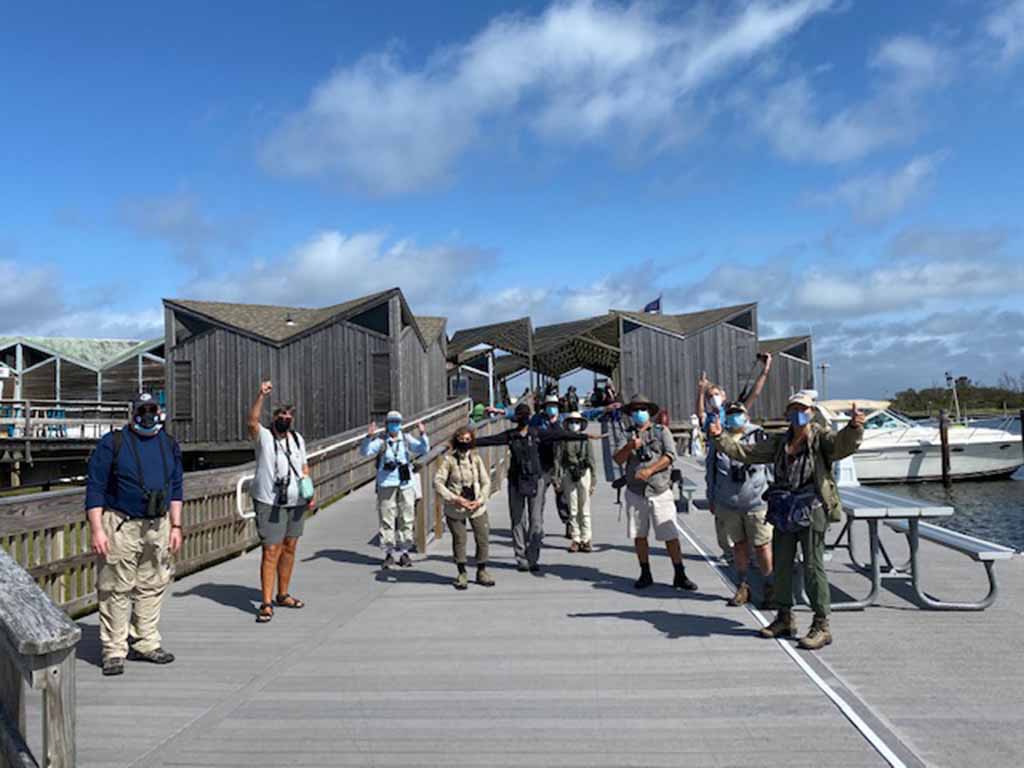Registrar: Miriam Rakowski
Attendees: 10
Weather: Temperatures, 70-75F; Winds, SE 10MPH
Bird Species: 45
Our adventure began on a lovely, mostly sunny Sunday morning, at the Patchogue Ferry dock. We were fortunate to have Paul Sweet, as our guide, a scientist from The Museum of Natural History. As we approached the ferry dock, Paul, pointed out clusters of Milk Weed Bugs on a host plant. Even before boarding the Ferry, a variety of birds were seen flying above. One had a lovely, bright orange bill, which turned out to be a Royal Tern.
After a relaxing 30 minute ferry ride across The Great South Bay, we arrived at Watch Hill, Fire Island part of the national seashore, maintained by the Federal Government. Watch Hill is a transformative place, without vehicles and only small buildings, all surrounded by azure blue water. It is a barrier Island about thirty miles long by about a half mile wide, just south of Long Island. There is a variety of habitats: dunes, marshes, forest, and beaches. With The Great South Bay, on one side, and the Atlantic Ocean on the other, we began our exploration.
We walked along the boardwalk, admiring the differing grasses along the marsh, an ideal habitat for a variety birds, during the nesting season. Some birds had already begun their migration. However, we were hoping to still see the Saltmarsh Sparrow. We were distracted by flocks of Least Sandpipers, probably scared up, by the many Northern Harriers, that were seen flying about. At one point we counted three. And yes, we were fortunate enough to have a good long look at the striking Saltmarsh Sparrow, arguably one of the most attractive sparrows, with its muted orange plumage.
We walked through a small forest looking for woodland species. Given that the winds were against us, we were fortunate to see a few warblers, and hear the repeated song of the Carolina Wren.
After a pleasant outdoor lunch, by the bay, we went to visit the ocean. As there had been storms earlier, the surf was strong. At the water’s edge Paul noticed a smaller gull. Upon closer inspection they were determined to be Lesser Black-backed Gulls, an adult and two juveniles. Paul, explained that the bird’s overall appearance was more delicate looking than other gulls nearby, with longer wing extensions, and a smaller bill.
We also spotted a peep. There was some conversation about this bird, as it was alone, with a longer bill that drooped a bit. However, after it demonstrated a typical Sanderling behavior, of running from the surf, we were confident in our identification.
On our way back to the ferry, we walked about half mile through the community of Davis Park. There we encountered a Ruby-throated Hummingbird, among other birds.
At 4:30 we took a relaxing ferry boat, back to Patchogue. Some of the feedback I received from the attendees on the boat were, the following: “Getting out of the city during COVID, felt like a mini-vacation.” Also, “This was a real treat!”
Species Lists
Birds
Canada Goose
Mute Swan
Mallard
American Black Duck
Rock Pigeon
Mourning Dove
Ruby-throated Hummingbird
Sanderling
Least Sandpiper
Laughing Gull
Ring-billed Gull
Herring Gull
Lesser Black-backed Gull
Great Black-backed Gull
Common Tern
Royal Tern
Northern Gannet
Double-crested Cormorant
Great Egret
Snowy Egret
Osprey
Northern Harrier
Downy Woodpecker
Merlin
Peregrine Falcon
Blue Jay
American Crow
Fish Crow
Black-capped Chickadee
Tree Swallow
Carolina Wren
European Starling
Gray Catbird
Northern Mockingbird
American Robin
House Sparrow
American Goldfinch
Saltmarsh Sparrow
Song Sparrow
Eastern Towhee
Red-winged Blackbird
Common Grackle
Common Yellowthroat
Northern Parula
Northern Cardinal
Mammals
White-tailed Deer
Butterflies
Monarch Larvae
Odonates
Seaside Dragonlet
Plants and Flowers
Spartina Grass
Salicornia
Winged Sumac
Marsh Elder
Bayberry
Sassafras
Poison Ivy
Other Insects
Milk Weed Bugs
